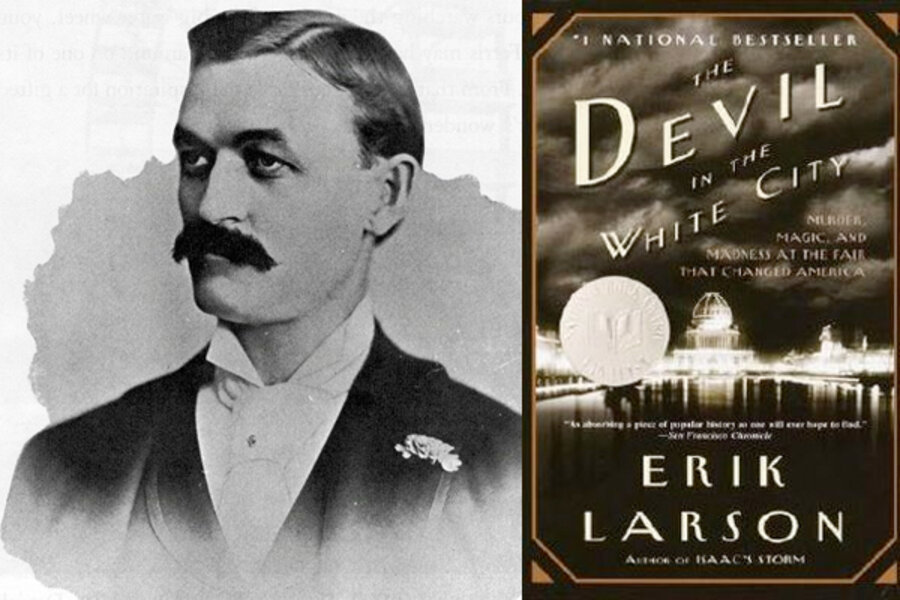George Ferris makes a memorable appearance in Erik Larson's 'Devil in the White City'
Loading...
“The Devil in the White City,” Erik Larson’s 2003 nonfiction bestseller, is a strange blend of true stories. The book combines two unlikely tales: the story of a notorious serial killer and the narrative of how the 1893 World’s Fair came to be.
But one of the best surprises of “The Devil in the White City" is the account of how George Ferris designed his famous wheel for the Chicago World’s Fair.
George Ferris, born George Washington Gale Ferris, Jr., grew up in Galesburg, Ill., and Carson Valley, Nev.,. He started working on railroads after college and his company, G.W.G. Ferris & Co., which was based in Pennsylvania, focused on ensuring the safety of the metals used in bridges and railroad tracks.
Ferris enters Larson’s narrative when the author discusses the contest held by the organizers of the 1893 World’s Fair in Chicago (then known as the World’s Columbian Exposition, since it was to be the first held in America). The fair’s directors wanted one of America’s engineers to create a structure for the event that would be grander than the Eiffel Tower. (The French monument was, at that time, something of a thorn in the side of the US architectural community, which yearned to build something more remarkable.)
In response, Ferris designed what would become known as the Ferris wheel and persuaded the directors that the structure would be safe for fairgoers. The wheel underwent a test run on June 9, 1893, and successfully completed a full rotation without anything going wrong. “I could have yelled out loud for joy,” Ferris’s co-worker, W.F. Gronau, said later, according to Larson’s book.
When completed, the Ferris wheel at the Chicago exposition was able to hold 2,160 people, with 36 cars total.
The inventor’s wheel continued to offer rides to the public at the fair’s site until April 1894, months after the Exposition had closed in October 1893. The Ferris wheel was moved for a time to a neighborhood in Chicago, where it operated for the residents until it was moved to St. Louis for the World’s Fair in 1904.
Larson’s narrative combines interesting information about the first American World’s Fair (such as the fact that the recitation of the Pledge of Allegiance in US public schools began at that time as a way to honor the Fair) with the horrific story of the serial killer H.H. Holmes, who lived in Chicago and confessed to more than 27 murders. (Some historians believe that his death toll is actually even larger.)
"The Devil in the White City" was a bestseller in both hardcover and paperback formats. Rights to the story have been purchased by “Django Unchained” actor Leonardo DiCaprio, who is expected to star in the movie as Holmes as well as serving as its producer. No release date has yet been announced.





